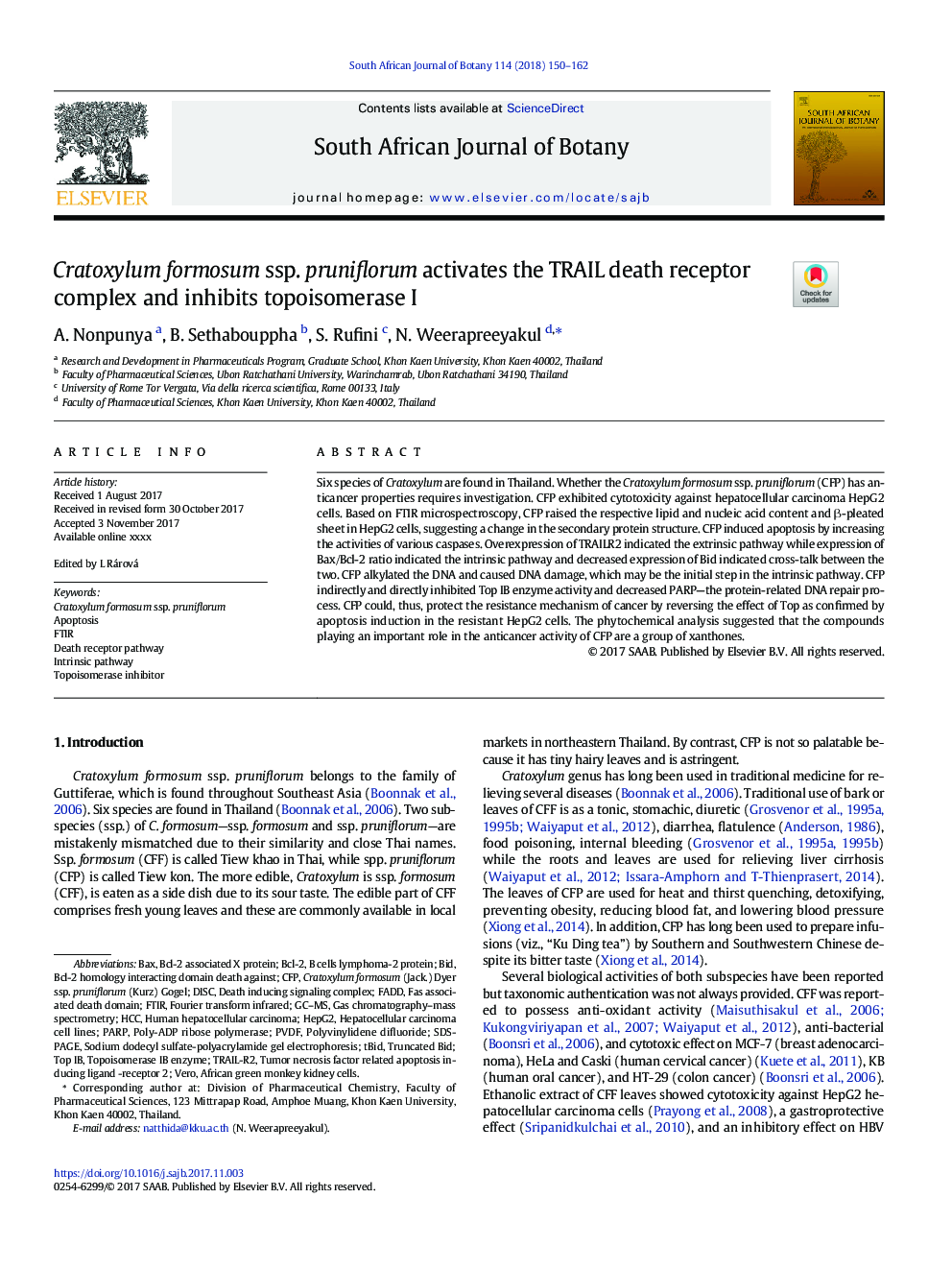| Article ID | Journal | Published Year | Pages | File Type |
|---|---|---|---|---|
| 8882429 | South African Journal of Botany | 2018 | 13 Pages |
Abstract
Six species of Cratoxylum are found in Thailand. Whether the Cratoxylum formosum ssp. pruniflorum (CFP) has anticancer properties requires investigation. CFP exhibited cytotoxicity against hepatocellular carcinoma HepG2 cells. Based on FTIR microspectroscopy, CFP raised the respective lipid and nucleic acid content and β-pleated sheet in HepG2 cells, suggesting a change in the secondary protein structure. CFP induced apoptosis by increasing the activities of various caspases. Overexpression of TRAILR2 indicated the extrinsic pathway while expression of Bax/Bcl-2 ratio indicated the intrinsic pathway and decreased expression of Bid indicated cross-talk between the two. CFP alkylated the DNA and caused DNA damage, which may be the initial step in the intrinsic pathway. CFP indirectly and directly inhibited Top IB enzyme activity and decreased PARP-the protein-related DNA repair process. CFP could, thus, protect the resistance mechanism of cancer by reversing the effect of Top as confirmed by apoptosis induction in the resistant HepG2 cells. The phytochemical analysis suggested that the compounds playing an important role in the anticancer activity of CFP are a group of xanthones.
Keywords
Fas associated death domainHepG2PVDFTRAIL-R2Bcl-2CFPPARPFADDDISCGC–MSHCCsodium dodecyl sulfate-polyacrylamide gel electrophoresisSDS-PAGEBaxFourier transform infraredtBidtruncated BidApoptosispolyvinylidene difluorideafrican green monkey kidney cellsFTIRgas chromatography–mass spectrometrydeath inducing signaling complexIntrinsic pathwayDeath receptor pathwayTopoisomerase inhibitorVeroBcl-2 Associated X proteinpoly-ADP ribose polymeraseBIDHuman hepatocellular carcinoma
Related Topics
Life Sciences
Agricultural and Biological Sciences
Agronomy and Crop Science
Authors
A. Nonpunya, B. Sethabouppha, S. Rufini, N. Weerapreeyakul,
